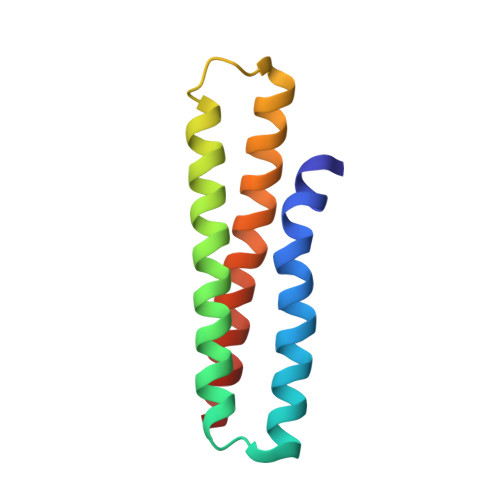NMR structure and IgE epitopes of Blo t 21, a major dust mite allergen from Blomia tropicalis
Tan, K.W., Ong, T.C., Gao, Y.F., Tiong, Y.S., Wong, K.N., Chew, F.T., Mok, Y.K.(2012) J Biol Chem
- PubMed: 22887997
- DOI: https://doi.org/10.1074/jbc.M112.348730
- Primary Citation of Related Structures:
2LM9 - PubMed Abstract:
Blo t 21 is a paralogue of the group 5 allergen, Blo t 5, a major allergen from the dust mite Blomia tropicalis. Blo t 21 has moderate sequence identity (40.7%) to Blo t 5 and low to moderate cross-reactivity to Blo t 5. In B. tropicalis, the most prevalent and allergenic allergens are in the order of Blo t 21, Blo t 5, and Blo t 7. Here, we determined the NMR solution structure of Blo t 21, which represents the first structure of the group 21 dust mite allergen. The structure of Blo t 21 closely resembles the structures of Blo t 5 and Der p 5, comprising three anti-parallel α-helices arranged in a helical bundle. Using site-directed mutagenesis and specific IgE binding ELISA, Blo t 21 was found to contain both conserved and unique charged IgE epitope residues at the L2 loop region and on helix α3. Cross-inhibition assays confirmed that Blo t 21 has a low to moderate cross-reactivity with Blo t 5 and Der p 5 and represents a novel group of major allergen in B. tropicalis. In addition to group 5 allergens, Blo t 21 has also a low to moderate cross-reactivity with group 21 allergens from Dermatophagoides mites, confirming that B. tropicalis is a major and distinct source of dust mite allergens.
Organizational Affiliation:
Department of Biological Sciences, Faculty of Science, National University of Singapore, Singapore.














